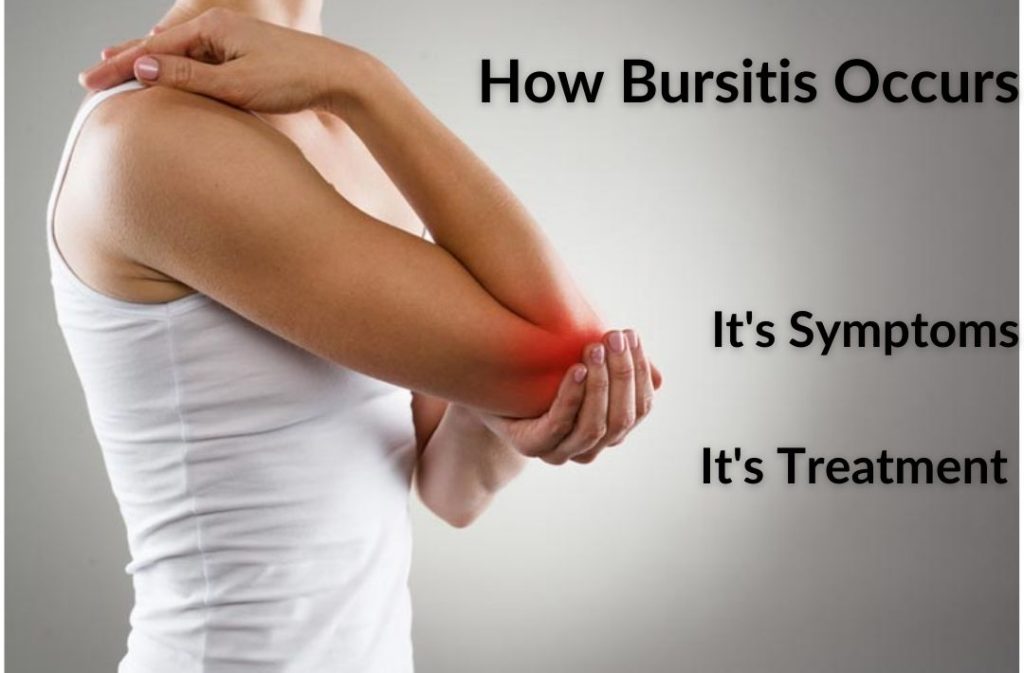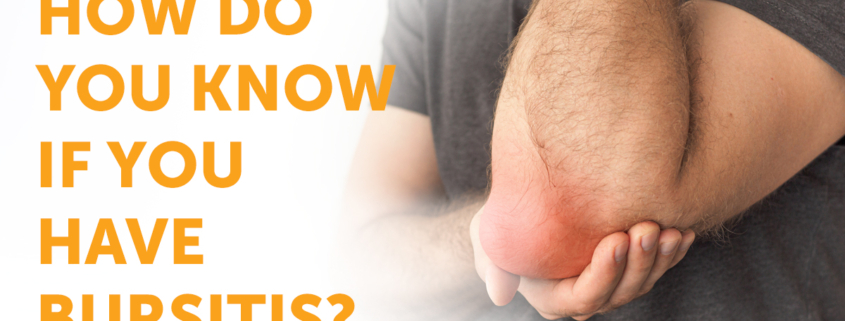How Bursitis Occurs, It’s Symptoms and It’s Treatment
The bursa is what cushions the tendon and thereby helps prevent friction between the tendon and the bone. Unfortunately, constant rubbing of the tendon over the bone with high amounts of the repetitive arm, shoulder, hip, knee, and ankle motion can lead to enough friction of the bursa itself to cause the aggravation and bothering of the bursa called bursitis.

Another way that bursitis occurs is when compression of the bursa happens regularly, such as a side sleeper who places a lot of shoulder or hip pressure when they lay down for long periods.
In this case, it would not take too much movement of this already compressed area to cause friction of the bursa.
Common Areas of Bursa inflammation
The most well-known ligament regions that become excited are the elbow, shoulder, hip, knee, lower leg, and heel.
Of course, bursitis can vary with each person, as it strikes the areas you use and irritate the most.
Bursitis Symptoms
Symptoms can vary from an achy pain and stiffness to the local area of the joint, to a burning that surrounds the whole joint the inflamed bursa.
With this condition, the aggravation is typically more terrible during and after action, and the bursa and encompassing joint region can become stiffer the next day.
Bursitis Treatment
With appropriate consideration for the area, the aggravation in the bursa ought to diminish north of three weeks, however, it should be noticed that the recuperating of the area proceeds and doesn’t stop until any less than about a month and a half following the underlying physical issue.
This is because of scar tissue arrangement, which at first behaves like the paste to bond the tissue back together. Scar tissue will keep on shaping beyond about a month and a half at times and up to a year in extreme cases.
Following a half year, this condition is thought of as persistent and substantially harder to treat.
The underlying way to deal with treating bursitis is to help and safeguard the bursa by propping any region of the ligament that is being pulled on during use, as this will help stop bursa friction from occurring.
It is important to loosen up the tendons, lessen the pain, minimize any bursa inflammation, and reduce the compression that can occur with laying down or sitting.
The pressure can be reduced while sleeping by using a softer bed topper like a memory foam mattress pad or even getting a new mattress that is composed of memory foam and/or latex foam.
Adaptable padding and plastic froth decrease pressure since they are the main substances that adjust with the knocks and bends of the body. It can subsequently diminish the strain spot by more uniformly dispensing the heaviness of the body.
Diminishing bursa irritation and calming the aggravation of bursitis should be possible topically if a pain killer can enter the skin hindrance and contains mitigating specialists. An effective recipe that contains regular menthol won’t just ease torment yet widen the veins.
This considers the alleviation of bursitis, without bringing on any hardening of the tissue. MSM, otherwise called Methyl Sulfonyl Methane is a characteristic enhancement that is standing out enough to be noticed because of its part in tissue mending at a phone level.
It is natural organic sulfur that comes from rainfall and is found naturally in the human body. It has been shown to have anti-inflammatory effects on the tissues Ice can relieve inflammation.
But will constrict the blood vessels and further stiffen the joint area.
Cortisone injections can reduce inflammation, but unfortunately are very caustic and can cause a weakening of the tissue structure and create more scar tissue.
After the scar tissue has begun to accumulate, it will be important to perform procedures that help break down the scar tissue in the tendon tissue,
to let the tendon and muscle regain their normal flexibility and lessen the chance of further injury.
Therefore, other methods that can be performed by your healthcare providers, such as ultrasound and massage, may be safely used to accomplish this early on in the injury. Ultrasound uses sound waves that vibrate a such a fast level, that they cannot be felt with normal use.
Bursitis Prevention
Prevention of this condition requires stretching the muscle regularly and thereby lengthening the tendon connections around the bursa.
As mentioned previously, reducing the compression with sitting or laying down is crucial for helping to keep the bursa from losing.
its natural lubrication and allowing the bursa friction to occur more readily. When bursitis does occur.
It is important to treat it immediately and thereby prevent it from reaching a more severe stage.




Leave a Reply
Want to join the discussion?Feel free to contribute!